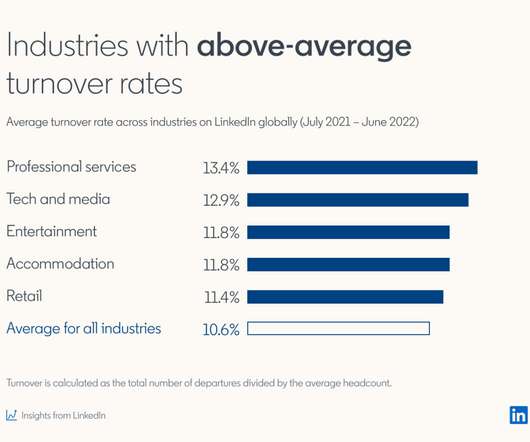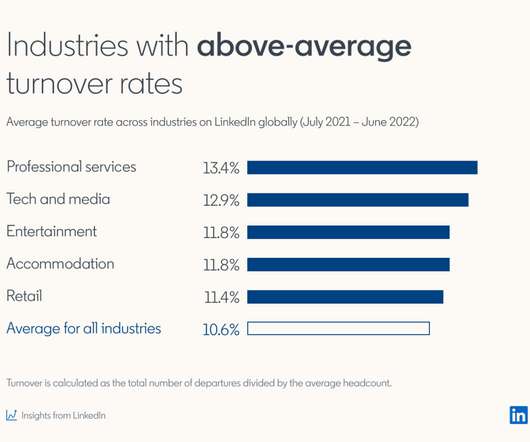3 Factors Strongly Linked to Better Employee Retention, According to 32 Million LinkedIn Profiles
Linkedin Talent Blog
NOVEMBER 20, 2019
So we applied the same calculation to the world of employee retention to see the odds of someone staying at a company — and we found three factors that are strongly linked to better retention. We looked at 32 million LinkedIn profiles to produce our own “retention curve.” Either new position was linked to greater retention.















Let's personalize your content